Sunday 28 February 2010
Saturday 27 February 2010
Tim Blanks on Jaiden rVa James & Re-bel
And it wouldn’t be London if there wasn’t at least one intensely polarizing presentation. Rasharn d’Vera Agymang and Jaiden James are buoyant twentysomethings who make clothes that are anything but upbeat. With Mad Max apocalypse and Mapplethorpe’s X Portfolio in mind, they produced a collection of fetish leathers that was numbingly literal. Meanwhile, Re:Bel, the magazine they make together, was being distributed outside in the courtyard of Somerset House. It’s an impressive feat, a manifesto that rebuts the bloggy brevity their peers opt for. In fact, Re:Bel looks so substantial that it made the clothes feel like an afterthought. But, from Karl Marx to Malcolm Maclaren, London has always been the city that is kindest to manifestos.
www.style.com/stylefile/2010/02/more-from-londons-triumphant-man-day/
Thursday 25 February 2010
THANK YOU
Topman for this amazing opportunity, Lulu & Beth and all at Fashion East, Sadaf at Booking, Mark at Select, Oxygen, Special thanks to Simon Worgan at AMCK, Nicola Formichetti, Simon Foxton, Charlie Porter, Ryan, Katie, Caroline and all at Cube, Lady Gaga, Jonjo Andrews, Anna Trevelyan, Chi Wong and Jed Root, Ayami Nishimura and Julian Watson Agency, John Sandiford, Bambos at Fantasy Shoes, Re-bel, Shocker & Graham, Robert Meyers, Steve Morris,Andrew Davis, Isaac Lock, Robbie Spencer and all at Dazed Group and all the others who have helped in some shape or form.

I don't think anyone knows how much this meant, its what we've always dreamed of doing since launching the label two years ago, this truly is a dream come true and all those younger designers or artists out there please never give up on your dreams as there is nothing sweeter than seeing it materialise.
This collection may divide many and nothing will ever be to the tastes of all but is that not what a new label is for to fill a gap in the art world (I mean 'Market') that has not been covered. To shock is to awake people from their current state of mind and bring them into a new state, At the end of the day like or dislike we was still able to provoke thought and feeling from an individual.
Wednesday 24 February 2010


Jonathan Saunders was actually my fave womens for this season, the mix of casual and sporty was fun, not much sports can get done in those killer heels, the caged jackets, gathered skirts and sheer chiffon tops. The oversized sporty hoodies and hooded jackets were so cute that if I had the budget I would gladly slip into them.



Beat this Aquascutum, Pringle and Daks. There is no denying that Burberry is a powerhouse that pushes forward not only in design but in manipulating technology although i didn't get to see this show, I can still appreciate it. The oversized parkas and sheepskin jackets are divine as are the thigh high snake skin boots, Bailey has succeeded in developing a classic British look and selling it to the world, conservative at times yet never boring.

As we enter a new decade, the fashion business, like the rest of the world, is encountering significant economic and technological change. In this new series, Style.com’s editor in chief, Dirk Standen, talks to a number of leading industry figures about the challenges and opportunities that lie ahead.
When I approached Hedi Slimane about doing this interview, his first in almost three years, he agreed on the condition that he could answer my questions by e-mail. Well, why not? This series is about the future of fashion, and—who knows?—perhaps this type of electronic exchange is the future of journalism. Besides, I thought that Slimane might bring a unique perspective to the subject at hand. He has been both an insider (as, among other things, the highly influential designer of Dior Homme from 2000 to 2007) and an outsider (since stepping away from Dior, he has pursued a more nomadic existence, focusing chiefly on his photographs for magazines and his Web site, www.hedislimane.com). Here, he discusses today’s “costly and overwhelming fashion avalanche,” whether or not he plans to return to design, and the enduring relevance of Pete Doherty. If this interview reads less like a conversation than a kind of manifesto for the future, I don’t think it’s any less interesting for that. Ultimately, though, it’s up to the reader to decide how well this format works.
How do you think technology—tweeting, blogging, social media, etc.—has affected fashion? For better or worse?
It has affected different aspects of fashion tremendously. From commentary to fashion design, communication, and distribution.
The fashion Internet community is like a global digital agora tweeting passions and opinions. Anyone knows better, and each one is a self-made critic.
This is a fascinating idea, as I always favored amateurism (”the one that loves”) over professionalism, attraction over experience. It obliges anyone in the industry to think in a fresher way.
Of course, it is hard to say if any “authority,” someone like Suzy Menkes, might one day come out and use digital means to lead with integrity, enough background, outside of any conflict of interest.
On a design perspective, it has allowed any young designer or indie brand to get an instant audience, if used with wit and invention.
I am not quite sure of the future of retail as we know it. This is a truly important thing, maybe the most important one, as it might already mean there is nothing standing between the design and an audience/consumer.
Finally, the better and the worse have always been part of fashion, with the Internet only magnifying it and creating a joyful and noisy digital chaos.
The bottom line is that any note can create music. It is only a matter of taste.
You photograph for magazines, but you also have a strong presence on the Internet with your Web site. Do you see a difference between the two mediums in terms of the presentation of your work?
They complete each other.
The Internet is about immediacy. Besides, I also operate my Web site directly, as I can decide if I want to post a story or reportage every day or every month. I also generally have a more complete edit on my Web site, after publication.
That said, I do love the strict frame of magazines, and to tell a story in an edit of ten or 12 pages, or to sum it up in a cover. It is a discipline.
Can you envision a day when digital media will replace magazines?
I totally do, and I don’t see it as a bad thing. You don’t fight but embrace a natural evolution, really, and try to figure out how it would reveal new creative fields within global access, and multimedia features.
The Web site magazine will come way before the print version in the next decade. I don’t see any way around it, really. With the rise of the Internet, fashion did become part of the global entertainment industry in the last ten years, and will follow the digital evolution of the music or film industry.
Besides, immediacy is better than old news. The “manufacturing” process of a magazine is far too long for this world, for the definition and idea that fashion is about “right now.” I guess it is more about “right now” now than ever before.
That said, fashion magazines, glossy magazines still use their Web sites for daily news and information only. I trust it might be interesting to invest strongly in art direction, besides hiring top editors, top photographers, and top models, which is hardly enough for Internet pages.
Quite certainly, the Web sites of the magazines will have to move away from the “blog” format and create an inspiring, tight template for their photo productions or editorial content, a Web site that has the [same feeling of] luxury and glamour as flipping through a heavy glossy magazine.
It is interesting to think how someone like Alexey Brodovitch would have investigated this medium to create typography and layouts in motion. It is now an open field for a new generation of editors in chief and art directors.
I hear one of the reasons for the lack of investment is advertising, although I trust advertising would follow immediately, if provided a reassuring image template for their costly ads.
I finally believe the printed magazine will then become a collector’s item, and hopefully a reference to be kept preciously.
Therefore, the commercial issues of advertising credits might move toward the Internet, [while] the most inspiring fashion stories could become exclusive to the printed collectible version.
Are you excited about some of the new digital developments—the iPad, better implementation of video, etc.? Do you think they will influence your work?
The iPad needs to catch up with Flash before I put a hand on it. This is really strange; I guess it is still in progress. Of course, this is only showing how many endless options are left wide open for Web sites, and how it will change the entire industry. It is totally exciting. On a different note, I still think video is a specific tool and does not replace stills. It is yet another interesting image-maker.
Do you currently use digital methods in your photography?
I don’t like to think in a nostalgic way, unless digital photography was doing a lousy job, which is not the case anymore. The truth is that I am using whatever tool I am given, and I’m happy to try what comes next. Besides, what’s relevant is one’s vision, really. At the end of the day, a piece of glass and a can is all you need to do a photograph, prehistoric-style. The most important thing besides technology was always to create a visual lexicon of your own, an accumulation of signs that immediately spell your initials. It is, of course, true for any creative field.
What are the creative rewards of photography? How do they differ from the rewards of fashion design?
Immediacy, independence certainly matter. I don’t need to be stuck with my flannels in a studio; my team is not permanent, so that I don’t have to deal with too many headaches and get distracted. But that said, I do love flannel, so I photograph it. This is why I organically went from fashion design to fashion photography, ending up using the Internet to pursue my ideas for fashion. It is like switching to a different language—not that it affects anything I have to say.
Some people are questioning whether, in an era when information is disseminated so quickly, fashion shows still matter. As someone who has been both a participant and observer, do you think fashion shows are still an important and effective method of presentation?
I understand the options, but there is something else besides information.
Fashion somehow, for me, is purely and happily irrational.
I like the ritual, the liturgy of a well-crafted, emotional fashion show. I will never be jaded with this side of fashion. The “catwalk” is pure anthropology, something like an esoteric encrypted parade. It can totally be replaced but it will be missed.
Archaisms do have some reassuring charms, unless the Internet is used creatively, and in a poetic way.
The problem is also the number of brands that insist, for vanity or desperation and beyond common sense, to squeeze into the endless fashion weeks of the world for the wrong reasons.
Some of them would benefit from different methods to present their collections.
Can you envisage a different method of presentation than a fashion show? Perhaps involving video or photography?
Of course, anything can be done, really, and the Internet technically allows any possible medium. This also means you can design anywhere.
It is an interesting idea, no matter where and how. “Equality” could come with a random Web address, although sadly some www. addresses are more equal than others.
Between menswear and womenswear, resort, pre-fall, and ready-to-wear, some designers are designing eight or more collections a year. Is it possible for a designer to be creative under those circumstances?
Designers end up needing a full-blast studio for this sort of thing, which is totally absurd. I also don’t understand what the hell people do with all those clothes. Less would be better, and shorter collections. Again, e-commerce might change this costly and overwhelming fashion avalanche.
Three of the strongest fashion design talents—Hedi Slimane, Helmut Lang, Martin Margiela—are currently pursuing other interests. Is that a coincidence or does it say something about the current state of the system?
I cannot really speak for them. I guess we all have enough time to experiment with different things. That said, fashion, what you call the system, has become quite used and abused with conflicts of interest.
The advertising game between the media and fashion houses might have gone too far. The meltdown did not help, to say the least.
As far as design is concerned, scaling down would help a lot. The global economy meant partnerships, and partnerships in the last decade came with some risks.
But there is something ironic, an absurd ending, a justice after all. What became of Helmut Lang or Martin Margiela without them? The irrelevance of buying young brands, [that are] ten to 20 years [old], without their original designers is quite striking. I always assumed, after all, it was about authenticity. Buying those houses ends up a conceptual and costly gift with nothing left inside but a few recipes.
Is the commercial pressure on designers today too great?
I don’t know about this. I am concerned about the relevance of strategy.
Selling is a positive thing. Of course, the overhead of many global houses is so huge that the pressure is great. I don’t mind the pressure at all; it is stimulating. I mind the lack of a long-term vision, and the lack of sense. It has to make sense, no matter the size of a fashion house.
Which designer or designers working today do you most admire, and why?
I have a great admiration and tenderness for Azzedine Alaïa. I haven’t seen him in a while, but I guess he must be still sewing some dresses at night.
The silhouette you proposed for men at Dior Homme is in many ways still the dominant silhouette today. Are you surprised by how long it has lasted? Do you see it changing?
I started to work on my silhouette since the end of my Saint Laurent years, when I had the option to pursue my own style. I also started it because it was the only thing that would fit me, to be totally honest.
I became very repetitive with it over the years, as I was trying to define it accurately.
I always thought it was all about repetition, and I became extremely stubborn despite my opponents and the natural aim of the fashion industry to look for something new each season. I never wanted to please, as long as I could follow my beliefs. I always and only thought about my own time and the birth of an entire generation.
I heard so much about my proportions, and how absurd and unsuccessful, for instance, my skinny jeans and silhouette would be. I also heard about my lack of definition in masculinity, as I was aiming to try another definition. I also was questioned about my attraction to music, as I still believe there is no fashion without music. Marie Antoinette knew better when she fetched Gluck to Versailles, to try her new wardrobe on the dance floor. Nothing will ever change. Fashion = music + youth + sex. This is what my menswear and my style were always about.
Besides the proportions, it was about an allure, a certain movement.
I always believed the way men or women wear clothes (le porté, in French) defines fashion, and funnily enough, through history, furniture design.
So that it was never a “fashion comment,” as I was interacting directly, and still do on my own, with unknown musicians, artists, street casting for my shows. It was not about doing punk rock or metal when punk rock or metal had no relevance to the moment. My fashion and my style were like a random and sometimes intimate diary. Living in Berlin, I interacted with the music scene at a time when Berlin was aiming to set up an abstract and ethereal digital tone; my years in London happened to be the time when a new indie scene emerged among my friends. There were no clothes available around, so I designed them for the rest of us. These are the clothes we wanted to wear, and these are the clothes, allure, and style that ended up my own.
The rest might by now be common knowledge. With Berlin becoming suddenly popular and the global indie scene explosion a few years after, my style spread accordingly.
Funnily enough, when I decided to put design on hold for a minute, it was all about how skinny was dead and how men would suddenly flip in the other direction. It ended up the contrary.
I just finished a report on this emerging movement I ended up being connected to called Jerking. It was born in Long Beach, Los Angeles, in late 2008 among black teenagers in high school. They call it the Skinny Jeans Movement and have songs like “I ROCK SKINNY.” They developed this creative community through social sites and found their style on the Net. The skinny look came first among them, then the music, inventing a broken-beat dance. As always, the music majors just spotted them and signed them one after the other. It is a really refreshing and joyful rap collateral movement. The project I did on jerking, jerk crews, and musicians will be online in a few days I guess, and Vogue Hommes Japan will publish some of it this month, as an introduction I guess. This movement is only starting, really, and it might spread over the global high school, with an avatar of my style in the broadband.
Now, from the streets to fashion week: I still have loyal assistants at Dior. I guess my shows had a specific atmosphere. Despite the necessary press rhetoric, the silhouette is still there, but more so my style and semiotic, used as an open-source commodity. It is quite convenient for me, as I don’t have to be in the kitchen anymore.
So, to answer your question, surprised I might have been, but is it going to change anytime soon? Time will tell.
What do you think of the work of Thom Browne? Or Tom Ford?
I met Thom Browne a couple of times and he was extremely lovely. I am not very familiar with his style. I also met Tom Ford a few times, but we don’t really know each other. We might have a really different approach to and understanding of fashion, which is, I believe, a really positive thing.
Your photographs of musicians and particularly the London music scene are well known. Do you find the same energy in the music scene today?
It is a really different time, of course. I documented and interacted with a scene that usually comes as a cycle every 15 or 20 years. I am not going to go through all of them as a demonstration, but everyone will get the picture. Punk rock ‘77, grunge ‘91, etc.
There are now, just like in other creative fields, in fact, newcomers that can have a hard time escaping the influence of the great bands of the early decade. The Strokes, the White Stripes, the Libertines led mainly the way for thousands of bands around the world. Besides, college teens in Paris or London and everywhere on the planet are still wearing Doherty’s hat (Pete’s influence is not yet perceived as it should be, and I have not one doubt to this day about his long-term relevance).
That said, I never think it was better before, unless I insist to sell French fries by the beach for the next decade and retire for good. It is just that it is harder to find inspiration and a true voice. And I did find it many times, lately with the Drums, who are so refreshing for someone like me, who has happily done the indie thing from A to Z. I also think there will be more and more interesting bands to come.
But it takes more than one band to create a wave, a movement, even with the Internet.
It needs to develop into a tight aesthetic. Music is not only about notes but graphic design/artworks, individual encrypted style, and a city to warm up in, some sort of experimental YMCA, before invasion. This, of course, is one of the reasons why cities go through cycles.
Who are your favorite current bands?
The Drums is my total favorite. Jonathan Pierce, the lead singer, and his friends write beautiful, moving songs and are genuine performers. I also love that for once I see an American band (from Brooklyn) using Americana symbols, in a poetic way. The Drums goes sideways, against the wind. They will be right, I guess, and will start a new scene.
Which city or cities are you spending the most time in these days? What do you enjoy about them?
Besides Paris, I spend some time in L.A., where I also have a house.
Of course, I secretly love that the common perception of L.A. is shallowness. A predictable cliché as always.
One would rather put in perspective the influence of California in global popular culture. From the counterculture’s heritage of the sixties and seventies to the rise of Silicon Valley in the eighties, from the Hollywood dream machine to the music industry majors, from Californian art to architecture, healthy lifestyle, and food, California does rule the village.
Besides, as trashy as the celebrity culture, paparazzi, and multimillion-viewer blogs can be, it is all over the fashion industry, hence the surreal fat checks for fashion show appearances or ad campaigns.
The last thing is almost “geo-strategic,” with California facing Asia.
Los Angeles might have a bit of a moment after all.
What effect do you think the rise of fast fashion has had on consumers and on high fashion?
The issue was pretty much when at the beginning of the 2000’s high fashion started to embrace (no question they had to) globalization. High fashion started to offer access to luxury and creativity. In a way it was dangerously closing the gap with fast fashion, which was incredibly effective in mimicking the style and standards (stores, merchandising, ad campaigns) of high fashion. It is mathematical. More means less rarity and less quality. This leads to the visual chaos of not exactly knowing what is what, if you forget your contact lenses and can’t read the label.
Would you have any interest in collaborating with a fast-fashion retailer?
I have obviously had a few discussions, like any of us, but I don’t really like the “capsule” collection trick, which I won’t do. There is something terribly cheap about it. This validation is somehow dodgy, since fast fashion, with few exceptions, is quietly ripping off all it can, including brands that are too small to defend themselves.
I would not mind and would be open to some evolution of fast retail, if it was aiming for an original design and a long-term commitment. It would become something else. Something like Apple computers, for instance, where design meets a wide audience through innovation and sense. In the future, fast-fashion retailers might change their philosophy toward real efforts to create a world of their own. One can only hope.
How can or should luxury fashion stand out from fast fashion?
They have a duty to stay at the top of the game creatively and keep a distinctive voice. Luxury houses and brands are meant to be exceptional by any means and not settle for the average. They cannot run the precise wrong race, but rather [should] stick to a strict and dignified etiquette for their fashion developments, assets, and branding.
Just like many Parisians, I was sad and surprised to see the historical and mythical store of Yves Saint Laurent, Place Saint-Sulpice, go.
I might not have followed some episodes of the “hows and whys,” being an outsider, but walking across Place Saint-Sulpice one day, I saw a fast retailer instead.
In general, luxury fashion houses are like royalty. They live to preserve and cherish the crown jewels and the symbols of their divine power, no matter what it takes.
Luxury brands did also become monuments, because of the public affection and care. In other prosaic words, it might be all about tightening up long-term strategies in order to keep the respect, influence, and credibility.
What excites you about the future, personally or in terms of fashion in general?
Everything, really. It is a fantastic time—difficult, of course, to some degree for many, because it is truly a revolution, led by the Internet, a digital revolution. Distribution and communication are in an ongoing fast-forward mutation. There is also a generation gap, which creates an acceleration of the treadmill for some. Not everyone is accustomed to this Internet world, which is understandable. It is just a different landscape, and as much as one might pretend to keep up, it is a tough one to follow: the freeway toward the musical chairs.
I trust fashion will invent new models, shortcuts, somewhere in between luxury (analog) and fast retail (digital).
In front of a beyond-informed audience and new generations being born with a wireless processor instead of a brain, it will be about having clear commitments and keeping an original voice no matter the scope and scale of fashion developments.
Finally, do you have any plans to return to fashion design? Now or in the future? Do you think it would be for your own label or for an established house?
I am not really studying one project but different options and collaborations at the same time. Obviously, I know what I want and precisely how I want to do it. When the time is right, what’s the rush?
One more: Is there anything else you would like to say about the “future of fashion” that I neglected to ask?
Oh, well, at the end of the day, the future is always the same story, minus the digital revolution and its collaterals. The future has to be bright. It is the nature of fashion to evolve, only this time it might evolve more than ever, with seat belts optional.
—Dirk Standen
www.style.com/stylefile/2010/02/the-future-of-fashion-part-three-hedi-slimane/
Sunday 21 February 2010
Wednesday 17 February 2010
re-bel1.blogspot.com/
Photographer - Kira Bunse Stylist - Rasharn Agyemang Stylists PA - Richard Coward Photograpgers assistant - Roman S CREDITS Nom de Guerre, Rebook, Franklin and Marshall, Stone Island, Topman, Freedy, Nike, McKenzie, Puma, Levis, Henri Lloyd,
Monday 15 February 2010
Steven Chu




 I fell in love with this guys work there is something mystical about some of it and others quite cinematic.
I fell in love with this guys work there is something mystical about some of it and others quite cinematic.



http://stevenchustudio.com/
NO COLOURS PHOTOGRAPHY DEVIN BLAIR




DIRECTION DEAN MAYO DAVIES & KATIE EARY
I don't know much about this but I do like it and next time I speak with Katie I will be sure to ask more about this piece and the artist.
Sunday 14 February 2010
Saturday 13 February 2010
MCQUEEN: Well, I think sometimes I might scare the editors, because they might feel they're getting old and they're not understanding it. The problem lies on their side of the fence, not mine. I come from a different era and I design clothes for our era. I think of people I want to dress when I design. Of course I make mistakes. I'm human. If I didn't make mistakes, I'd never learn. You can only go forward by making mistakes. I'm twenty-seven, not fifty-seven. I'm not Givenchy, I'm
Alexander McQueen.
http://www.interviewmagazine.com/blogs/fashion/2010-02-11/remembering-alexander-mcqueen/
Friday 12 February 2010
Thursday 11 February 2010
Subscribe to:
Posts (Atom)































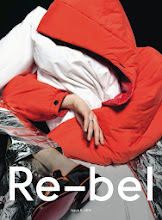
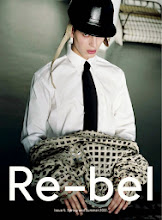



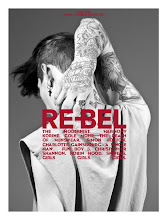



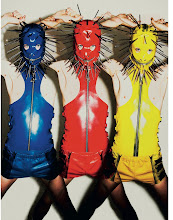
.pdf+-+Adobe+Reader.bmp)
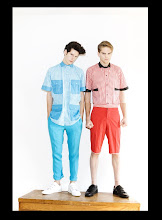

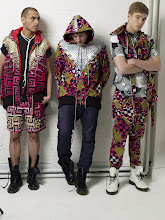
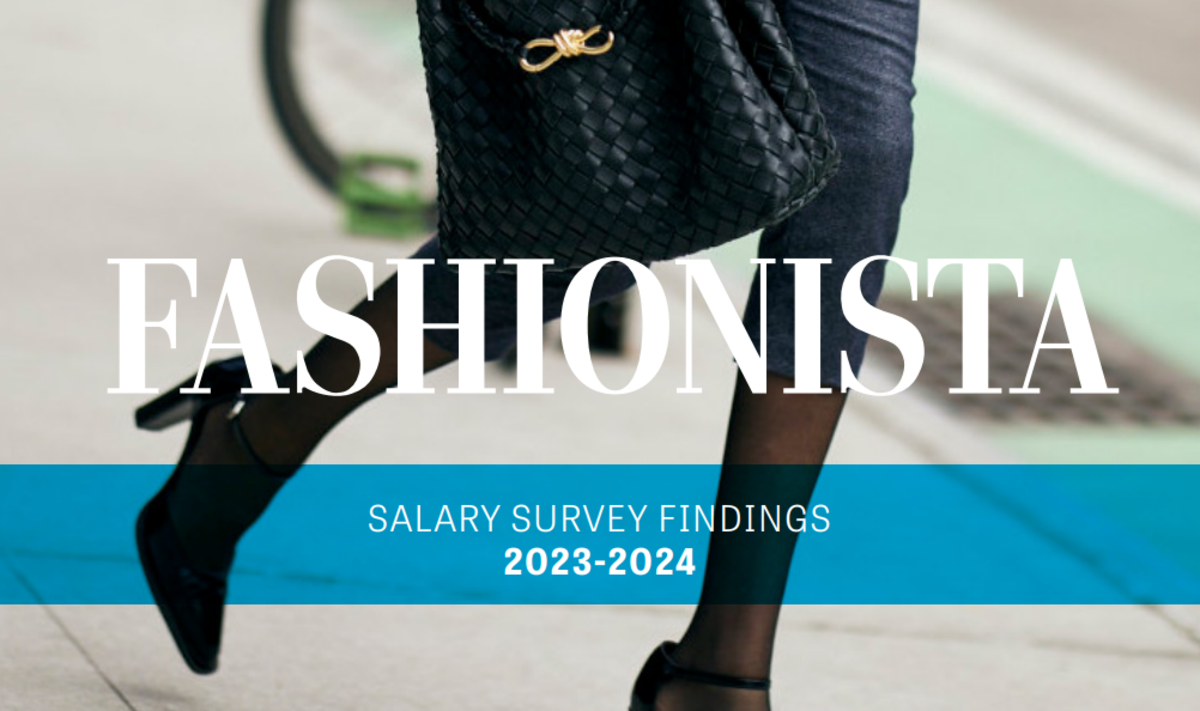






































.png)














































-3.jpg)




































